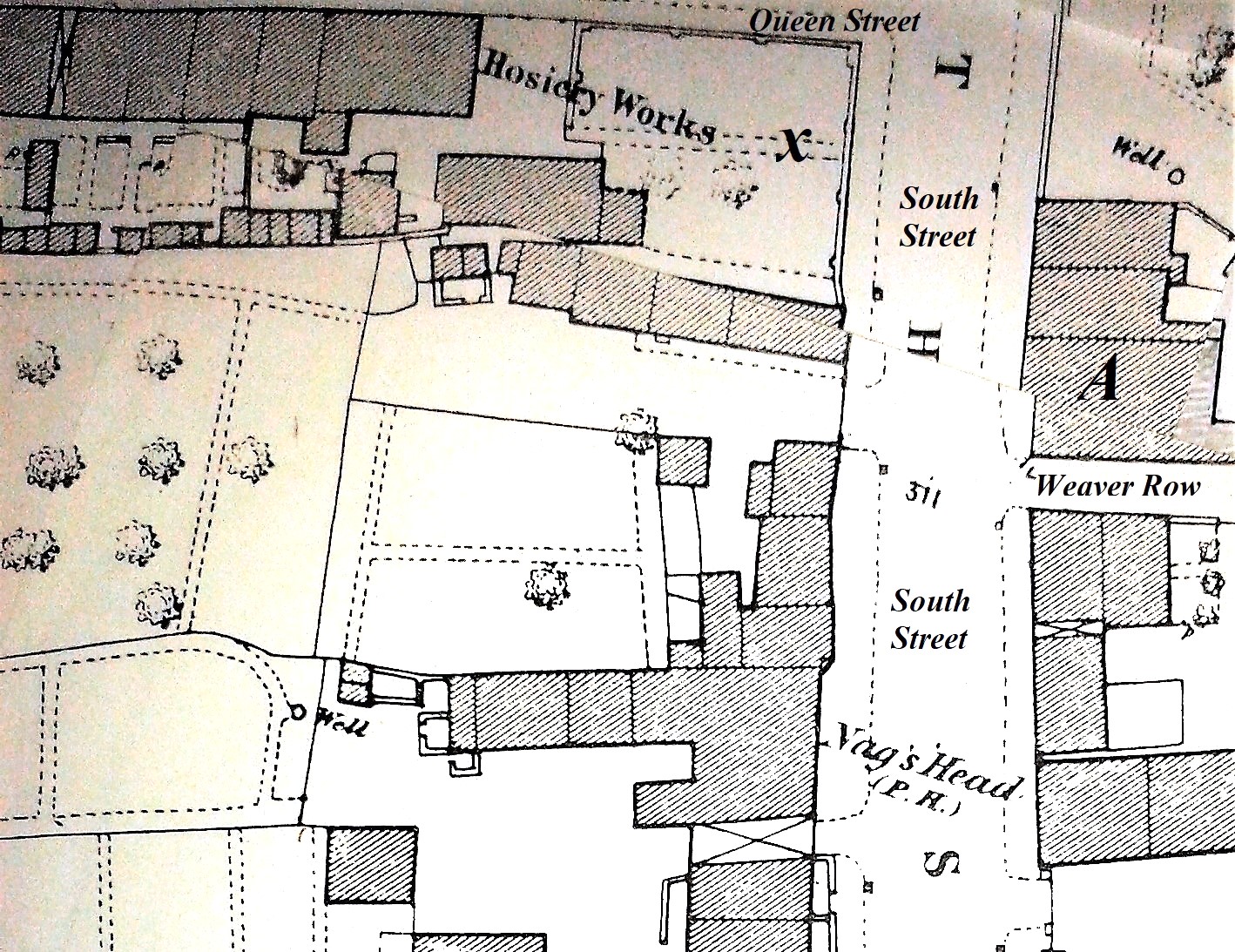When Queen Street was opened, on the north side was the Baptist Chapel, built in 1858.
The Sudbury properties around Queen Street and Weaver Row c1880
Adeline explains that “the south side of Queen Street was clear, with no buildings, until Mr. Francis Sudbury senior, father of the late Francis Sudbury, first Mayor of Ilkeston, bought a piece of land in the new street. It was the upper part. The part fronting South Street was kept for many many years as a potato patch. Afterwards Mr. George Haslam built a house on this potato patch”.
Here Adeline is describing the southern part of Queen Street nearest South Street — X on the map above. George Haslam’s house on the potato patch was called Euclid House, built in 1884, and stood at X.
Previous to this the Sudbury family lived on the other side of South Street in what Adeline describes as “the old white house opposite Weaver Row (This is marked as A on the map. By ‘opposite Weaver Row’ Adeline means on the other or north corner. It was later number 45 South Street where Jacob Hawkins had his cycle shop)
“Their warehouse or room for taking in the hose made by outside frame workers was a detached room against the White house. This room was afterwards Mr. Sudbury’s butchers shop, later on it became Jacob Hawkins’ Cycle Store.
“On the lower parts Francis Sudbury built a small two-storied factory at the front, while the back part had a small building for a warehouse and office. These buildings were the beginning of the business of F. Sudbury and Sons, afterwards changed to C. and F. Sudbury. Some years ago these two buildings were converted into cottages.
“William Topliss, who was formerly a teacher at the British School, was their first clerk”.
——————————————————————————————————
William Toplis
William Toplis was born in South Street on September 30th 1844, the second illegitimate son of Mary Hackett Daykin Toplis — her first one had died, unnamed, aged five weeks, on March 1st 1843.
William served as a pupil teacher at the British School in Bath Street before being employed as a book-keeper by Sudbury & Son. He was an unfortunate victim of the smallpox outbreak which was recorded in the town in the early autumn of 1866 — even though he had been vaccinated. He died on November 2nd 1866 and was buried in Ilkeston General Cemetery.
The name of his mother was derived from the maiden names of her mother (Ann Daykin) and her maternal grandmother (Mary Hackett). She had a further illegitimate son, Herbert, born on July 30th 1847, who left Ilkeston as a young man to join and work for his uncle John Toplis, who was then a yeast dealer in Oldham. Herbert remained a grocer’s assistant for the rest of his working life and died in Oldham in 1912.
The father of these illegitimate lads — or some of them — might have been house painter William Tunnicliffe, who had lived in South Street with his wife Mary (nee Rogers). The couple had several children before Mary died in July 1843 at the relatively young age of 31.
William was certainly the father of Mary Daykin’s fourth illegitimate son — Arthur Daykin, whose birth registration records ‘William Tunnicliffe, painter’ as the father.
——————————————————————————————————
Also on the Sudbury land was the cottage occupied by his worker John Fish.


